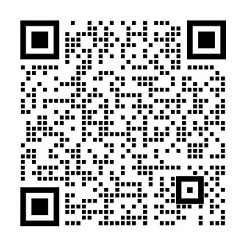毛细支气管炎常见的临床表现是( )
A.主要发生在冬春季,多见于学龄前儿童
B.急性起病,多为中高热,全身中毒症状较重
C.以喘憋和肺部哮鸣音为突出表现
D.出现呼吸困难,主要为吸气困难,可为阵发性
E.查体可触及肝脾,主要是因为合并心衰
试卷相关题目
- 1下列哪项不是毛细支气管炎的常见病原体( )
A.呼吸道合胞病毒
B.副流感病毒
C.人类偏肺病毒
D.鼻病毒
E.柯萨奇病毒
开始考试点击查看答案 - 2气管炎与肺炎的鉴别要点为( )
A.高热
B.咳嗽、咳痰
C.双肺哮鸣音或干啰音
D.呼吸急促
E.血白细胞及分类
开始考试点击查看答案 - 3以下哪种情况不属于急性支气管炎的危险因素( )
A.免疫功能低下
B.特应性体质
C.营养障碍
D.支气管局部结构异常
E.运动和过度通气
开始考试点击查看答案 - 4A 6-year-old boy is brought to the emergency room with a 3-hour history of fever of 39.5℃ and sore throat. The child appears irritability,sweating,and cyanosis with inspiratory stridor,reduced lung sound and tachycardiac. What should you do immediately?( )
A.Examine the throat and obtain a culture
B.Obtain an arterial blood gas sample and start an IV line
C.Order a chest x-ray and lateral view of the neck
D.Prepare to establish an airway
E.Admit the child and place him in a mist tent
开始考试点击查看答案 - 5What can be found if a child with Ⅲ grade (levels) laryngeal obstruction?( )
A.Stridor and dyspnea just can be found after activities with normal lung and heart sounds
B.Exhaustion,lethargy,shallow (weak) breathing,pallor,silent lung,arrhythemia,weak heart sound
C.Stridor and dyspnea
D.Dysphoria,cyanosis,sweating,reduced lung sound,tachycardiac,inspiratory recess of soft tissue
E.All of above are not correct
开始考试点击查看答案 - 6呼吸道合胞病毒性肺炎最突出的临床表现是( )
A.干咳
B.低至中度发热
C.呼吸困难
D.喘憋
E.严重的中毒症状
开始考试点击查看答案 - 7毛细支气管炎最常见的病原体是( )
A.呼吸道合胞病毒
B.腺病毒
C.鼻病毒
D.肠道病毒
E.副流感病毒
开始考试点击查看答案 - 8对毛细支气管炎的描述,错误的是( )
A.双肺哮鸣音
B.多为稽留热
C.呼气性喘鸣
D.双肺中细湿啰音
E.明显喘憋
开始考试点击查看答案 - 9有关毛细支气管炎临床特点的描述,错误的是( )
A.多见高热
B.严重时并发呼吸衰竭
C.肺部闻及弥漫性喘鸣音
D.喘憋重而感染中毒症状轻
E.可同时出现通气和换气功能障碍
开始考试点击查看答案 - 10下列有关毛细支气管炎的描述,不正确的是( )
A.多由病毒感染引起
B.多见于2岁以前,尤其是6个月以内小儿
C.肺部可闻及呼气相哮鸣音
D.全身中毒症状重,多有高热
E.严重时可发生呼吸衰竭
开始考试点击查看答案
 湘公网安备:43011102000856号
湘公网安备:43011102000856号 
